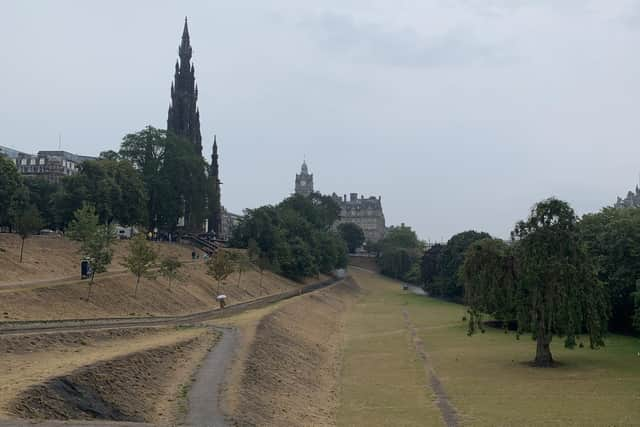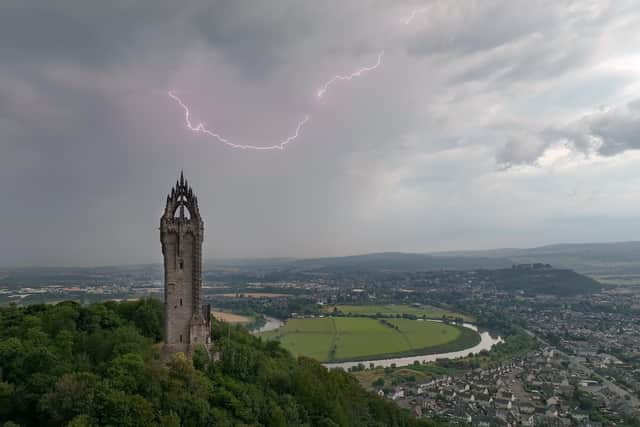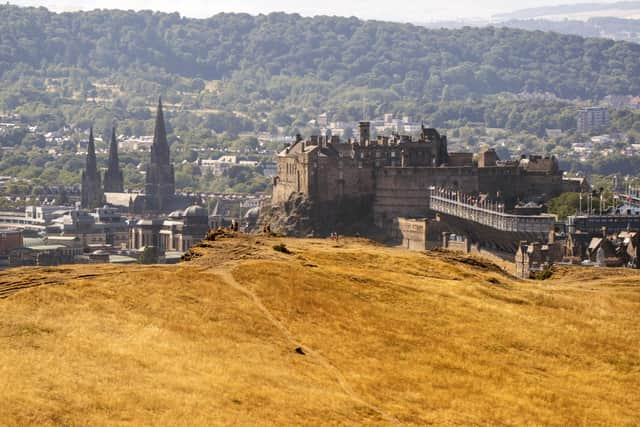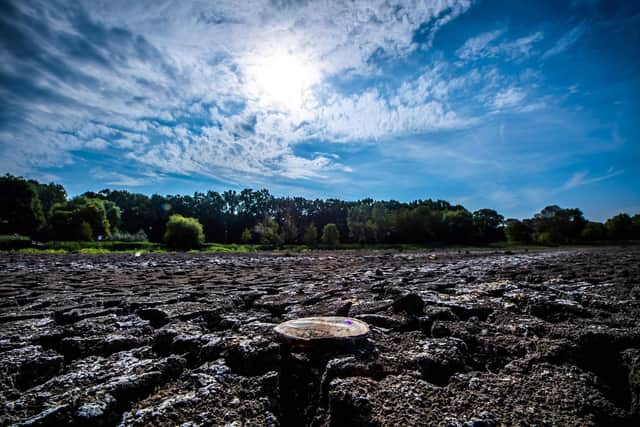Why current downpours may not be enough to damp down parched Scotland
That may not seem unusual, but the current wet weather belies a bigger – more worrying – picture.
Despite its traditional image as a lush, green, rain-soaked place, Scotland has been experiencing an increase in water shortage events in recent years as a result of climate change.
Advertisement
Hide AdAdvertisement
Hide AdAnd more uncertainty is expected in future as the impacts of warming continue to accelerate, with new areas which have not previously been affected by water scarcity predicted to suffer.
This week farmers in Fife have been banned from taking water from one of the key rivers in the region due to unusually arid conditions.
They fear the move could result in “complete failure” of some crops, which could impact both fresh and frozen supplies and hit businesses hard in the pocket.
Vegetables such as broccoli, cauliflower, kale and lettuce are particularly at risk of being lost if water is limited.
Water levels in the River Eden had reached perilously low levels following a prolonged period without rain and an unseasonably dry start to the year.


The Scottish Environment Protection Agency (Sepa) suspended the majority of water abstraction licences from Sunday, despite the forecast downpours.
A significant scarcity warning has also been issued for the River Tweed in the Borders, where a ban could still follow.
The move is part of Scotland’s National Water Scarcity Plan, which aims to balance environmental concerns such as survival of wildlife with provision of resources for human and economic activity during prolonged dry periods.
It’s not just Scotland which is drier than usual.


Advertisement
Hide AdAdvertisement
Hide AdThe lack of rain this year has led to even more dramatic situations elsewhere, with many places plagued by drought and ravaged by uncontrollable wildfires.
According to figures from the European Drought Observatory, 45 per cent of Europe and the UK was in ‘warning’ conditions and 15 per cent in ‘alert’ conditions during July.
An official ‘drought’ has been declared across several regions of England, with the country suffering its driest July since 1935.
Hosepipe bans are already in place in some parts, with more due to be implemented.


The bad news is the recent downpours are unlikely to significantly improve the situation, even in Scotland.
Hydrologist Dr Andrew Black, from the University of Dundee, has been studying water – mostly in Scotland's rivers, including the Eden – for the past 30 years.
He says agricultural businesses and householders are right to be concerned, as heavy showers may have briefly raised water levels in the Eden but that’s unlikely to be sustained.
“The current wet spell does not mean that farmers’ concerns can be forgotten about,” he said.
Advertisement
Hide AdAdvertisement
Hide Ad“On Monday afternoon the River Eden downstream of Cupar was up 10cm on the level it had been in recent weeks.
“Indeed in the morning, in response to some heavy downpours associated with the thunder and lightning, it was briefly up as much as 30cm.


“But we must remember that the soils have been parched, and until the rainfall percolates in meaningful quantities down to the aquifers which sustain the River Eden, the danger is that this river and its tributaries will quickly revert to a very low flow situation.
“There is more rain forecast over the next couple of days.
“It’s forecast to be showery, so while some areas may receive useful amounts of water, those are unlikely to be widespread.
“Over the next week the value of the current spell of wetter conditions is likely to be to provide short-term benefit for soil moisture and the crops which are presently in the ground, but as yet unlikely to be enough to lead to a withdrawal of Sepa’s restrictions.”
The latest data shows the Eden saw around 420mm of rainfall over the nine months up to the end of July.
This compares with the driest winters in records beginning in 1961: 416mm for 2008/9; 434mm for 1975/6 and 437mm in 1974/5.
And Dr Black warned that two consecutive dry years, like what happened nearly 50 years ago, could have a more severe impact today.
“Such an event could happen again,” he said.
Advertisement
Hide AdAdvertisement
Hide Ad“And that would have serious consequences for the Eden, given that much greater use of the water is made for agriculture than was the case in the 1970s.”
As well as posing a major issue for farmers, Dr Black warns the current water shortage could also pose challenges for domestic customers.
But Scottish Water has assured customers that drinking water supplies are not at critical levels north of the border and the firm is able to balance supplies using reservoirs across multiple regions.
“We have no water usage restrictions planned,” a spokesperson for Scottish Water said.
“Average reservoir levels across Scotland are currently at 80per cent, which is typical for this time of year.
“There are some parts of the east of Scotland where levels are below this, and lower than they usually are at this time of year.
“We are monitoring and managing our water resources and, in some instances, reservoirs are being topped up from alternative water sources to ensure supply resilience for customers.”
However, householders are being reminded to use water as efficiently as possible by doing things such as taking shorter showers, turning off the tap when brushing teeth, using washing machines and dishwashers only when fully loaded, using a watering can instead of a hose to water gardens and using a bucket and sponge rather than a hose to clean cars.
Comments
Want to join the conversation? Please or to comment on this article.